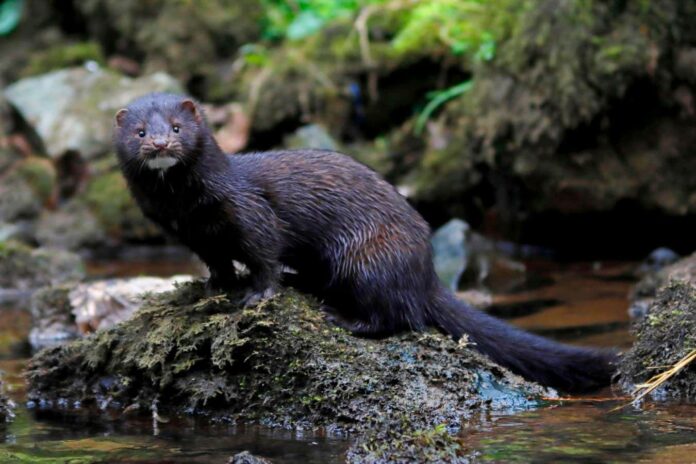A wildlife group is aiming to eradicate invasive American mink from all of Britain after ridding them from part of England during a three-year trial. This involved a new approach that used the scents of mink’s anal glands as bait to lure them into smart traps, marking the first time the animal has been eradicated from a large area anywhere in the world.
“Until about a month ago, I thought mink had not been eradicated from anywhere,” says Tony Martin, chair of the Waterlife Recovery Trust, which organised the trial alongside volunteers. “Then I found a report of a little island off Estonia where they had got rid of them, but nothing on anything like this scale. This is the orders of magnitude bigger.”
Mink are small semiaquatic predators that are related to weasels and are often farmed for their fur. As a result of them escaping from farms or being released by animal activists over the past century, American mink (Neogale vison), which are native to North America, have spread to many parts of Europe and South America.
There, the animals have had a big impact on many native mammals, birds and fish, including the smaller European mink (Mustela lutreola) native to continental Europe.
The idea of eradicating mink used to be regarded as completely implausible, says Martin, who attributes the success of the Waterlife Recovery Trust’s trial to two innovations. Firstly, it is using traps with a device that detects when they have caught something and alerts the volunteers responsible. “This means that you don’t need to visit the trap every day, which you would otherwise,” says Martin.
This is particularly important towards the end of eradication efforts, he says, when no mink may be caught for months and volunteers tire of checking traps daily. It is also more humane because traps can be visited quickly and the mink promptly culled.
The second innovation is the use of scents taken from the anal glands of trapped mink as bait. This makes the traps more appealing to mink and less likely to catch other animals.
In 2020, around 500 traps were placed in a 6000-square-kilometre area covering most of East Anglia. Today, only the traps located where the trial area borders other areas, where mink are still present, are catching the animals, says Martin. On 15 January, the Waterlife Recovery Trust announced that its trial had successfully eradicated mink from the specified area.
The trust has already been given £500,000 by the government agency Natural England to expand the eradication effort to a larger area of the country, with the aim of ridding mink from all of Britain.
“We now know we can do this,” says Martin, who previously led the successful effort to eliminate rats from the island of South Georgia. How long it will take will depend on how many traps can be put out, he says.
The same approach would work on continental Europe and in South America too, he says. “If you’ve got the right plan, then it’ll work on any scale you like.”

